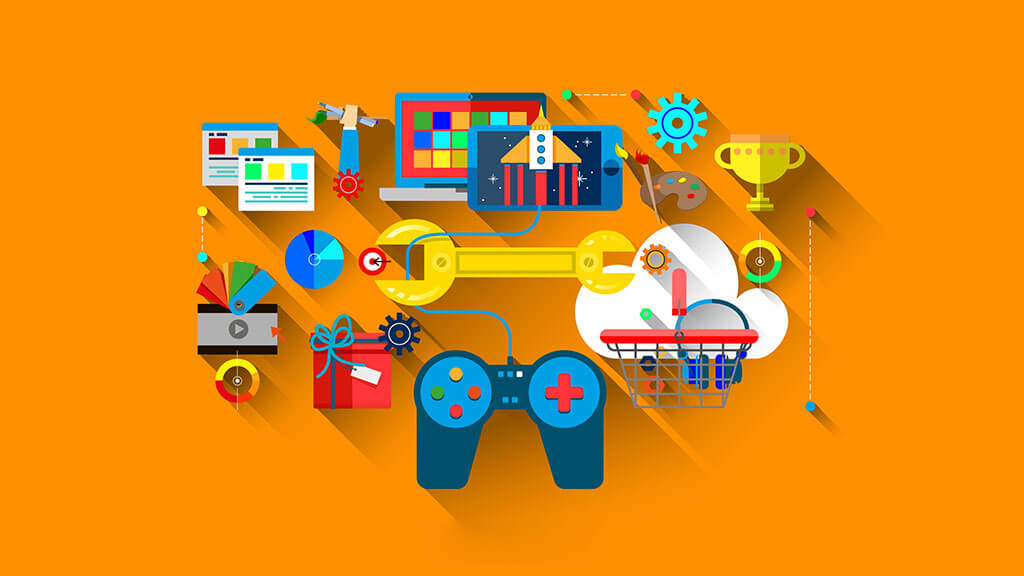Mobile gaming apps are a huge potential market for revenue. According to a recent study, the mobile game app market has grown by 13.3% in 2020 with an approximate revenue amounting to $77.2 billion. The study also suggests that this segment of gaming apps has the least number of barriers to entry because a huge population has smartphones today. With such eye-popping figures, everyone wants to build their own gaming app. Developing a successful mobile game is no cakewalk. For creating a profitable game, you need to study your target audience, create engaging gameplay, and strategically monetize it. What is the first step? And, how much it is going to cost you? Well, to make this process easy for you we have broken down the steps to make a mobile game app in a few simple yet easy DIY steps. So, without any further ado let’s get started.
Steps to develop a mobile game app
1. Working on the Idea
Ideation is the most complex and yet crucial step for building any successful mobile app. The idea becomes the deciding factor for the overall other steps including the cost. There is no direct or one-way process that can be followed to generate new ideas. The key to finding an idea is to think of something innovative, engaging, and out of the box. The idea should appeal to a mass audience enabling you to make profits.
The best way to do this is by improvising on the current idea. For example, Candy Crush is the best example in this case.
2. Tell a story
Story-telling goes a very long way in the gaming industry. The players need a purpose to finish the game and for that, they need a story.
In fact, creating a story is not that difficult. All you need to do is simply answer the following questions about the game and the characters and voila!
- Who is the hero and villain in the story?
- What are their strengths and weaknesses?
- Why are they fighting each other?
- How will the hero/player win the game?
3. Make it user-friendly yet addictive
A little addiction goes a long way in retaining users to your game. There are certain elements that help make the game addictive. Your game should be easy, fast-paced, and fun with a real-life art style and a gradually increasing difficulty level. Also, players tend to lose interest in lengthy games. To keep them engaged create short levels with a lot of unlockable content. In a long run, you can retain users with frequent updates and freebies on holidays and special occasions.
4. Select the game engine
While gaming apps are still built on code, the availability of game engines has made this process a whole lot easier. The choice among Android, iOS, Blackberry, and Windows seems tough, but in the end, the option narrows down to only two options i.e. iOS or Android for pretty obvious reasons. So, the deciding factor for your game should be your target audience. Focus on the OS that your most profitable players will use, and prioritize it. If you think that your user-base is spread across multiple platforms, only then opt for more than one mobile OS.
5. Design
Creating a game design is much more complex than creating a design for an app. A good game design takes into account multiple factors like the story that directs the game, the characters, and the final appearance. The design of your game can be a major differentiating factor between you and your competitor’s game. When it comes to game design, the possibilities are endless because your design can as simple as a flat design or complex like a comic style with a 3D layout.
6. Monetization
There are thousands of non-profitable gaming apps. So, it is better to plan the game’s monetization strategy before starting with the development. Developing a game is expensive and time consuming for any platform. So, you should have a plan to recover the investment. Listed below are some of the most common ways to monetize your app.
7. In-app Purchases
Though these purchases only account for around 2% in Android and a little more in iOS, still it is an effective way to earn money.
8. Ads while playing
This a great strategy as many games combines ads with in-app purchases. But make sure to pay special attention to the ad content because if it’s unrelated or annoying then the results will be counterproductive.
9. Premium Versions
In this, you offer a free trial or demo and ask players to pay for further use. Straight away asking for payment will significantly reduce the number of purchases.
10. Technology
Once you have your game idea the next step is deciding the technology to be used in the development of the app. Here you decide upon the main design tools to be used and the type of game you need to develop. Given below is the options you can choose from:
- Native mobile game development involves using languages native to a platform for coding. For example, using Java for Android or Swift for iOS. So, if you are looking for a performance-based app, then native development is your go-to approach.
- HTML5 mobile game development uses standard web technologies – HTML5, JavaScript and CSS. HTML 5 uses a write-once-run-anywhere approach that works well for cross-platform development. There are some limitations in this like session management, securing offline storage, and access to native device functionality (camera, calendar, etc.). Overall it is a good option for mini-games.
- Hybrid mobile game development combines the benefits of both native and HTML models. It uses HTML 5 design inside a cell to run the game on any platform.
11. Right People (Developers)
The main reason that contributes to successful mobile game development is to choose skilled game developers. You need a developer who has both, the required skills as well as expertise to transform your idea into a lucrative business. So, make sure you check thoroughly before making the final decision.
Mobile Game Development Cost
Game app development can start from $1500 for simple game development like a shooter and it can go as high as $1,000,000 depending on a variety of factors like technology being used, a number of developers, features, designs, and many more like the above-listed factors.
Conclusion
Mobile game development is an intricate project where a lot of brainstorming and analysis goes behind taking a firm decision. As for the economy of scales and cost, it is hard to neglect the development team, technical resources, project size and so many other factors involved in it.
Before you make any decisions, it is always better to do proper research in the field you want your app to be and take into consideration all the factors that are involved and specially the monetary benefits. And once all this gets finalized find yourself a team of professionals for the creation of the gaming app.

Director @Anyalpha, a Top Software Development Company offering Mobile App Development and Website Development Services to Businesses & Startups.


